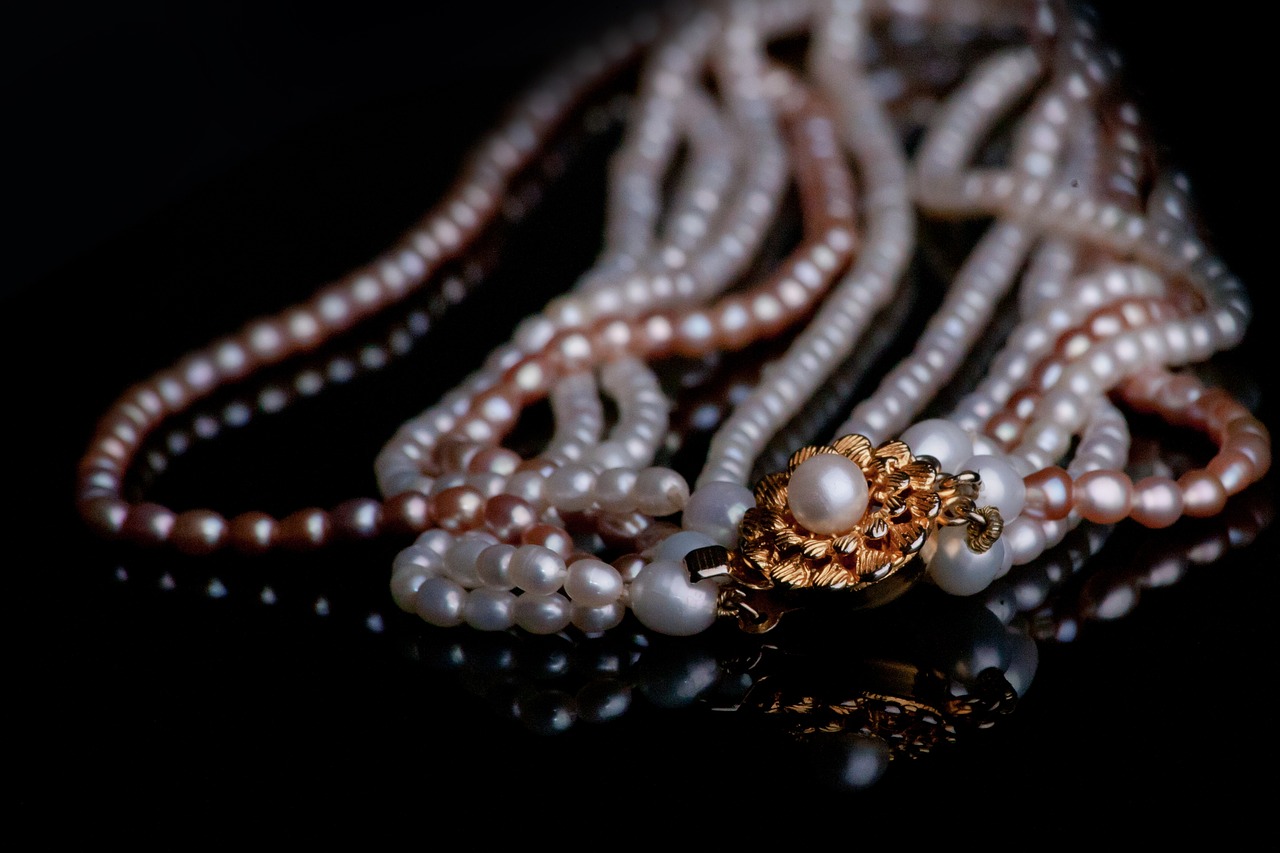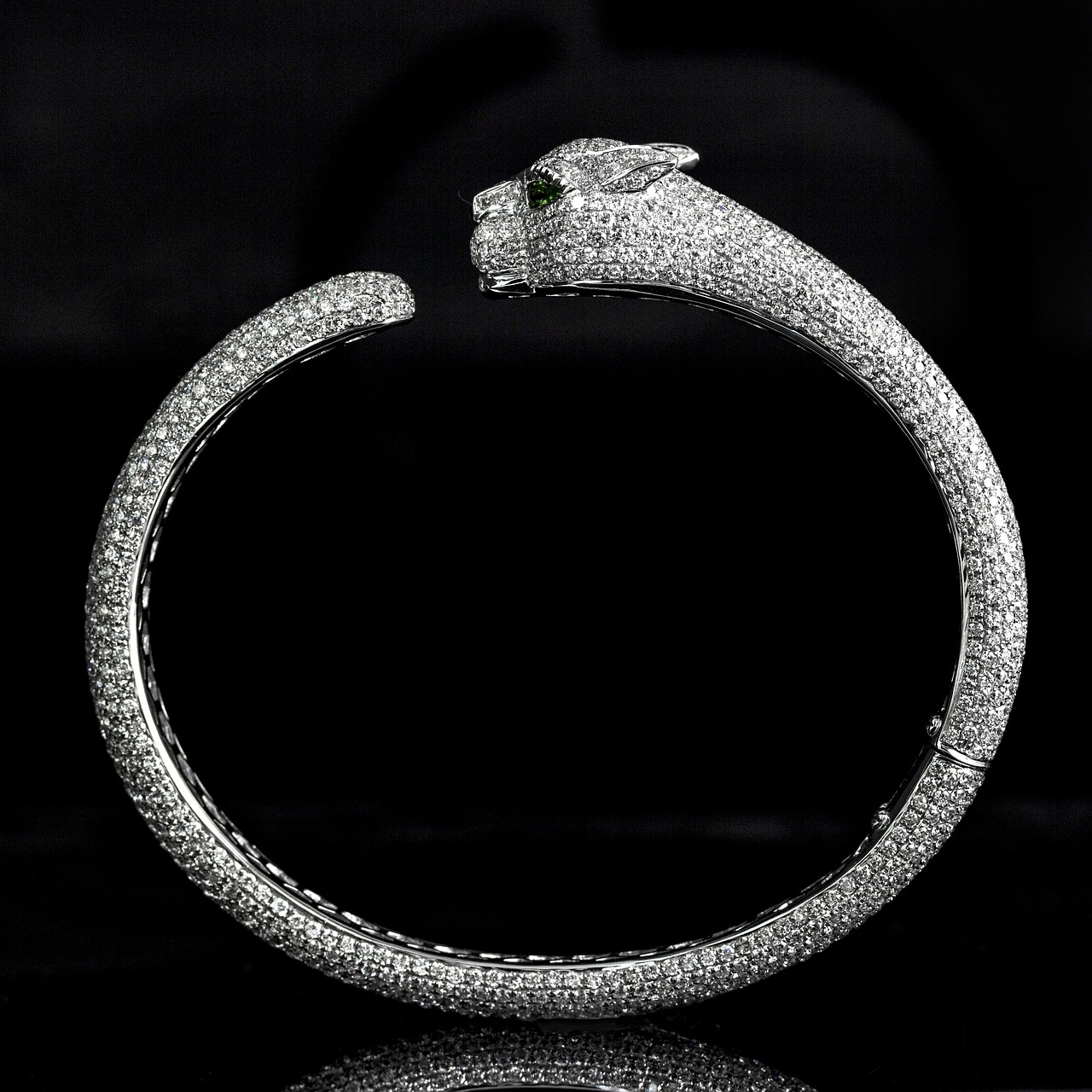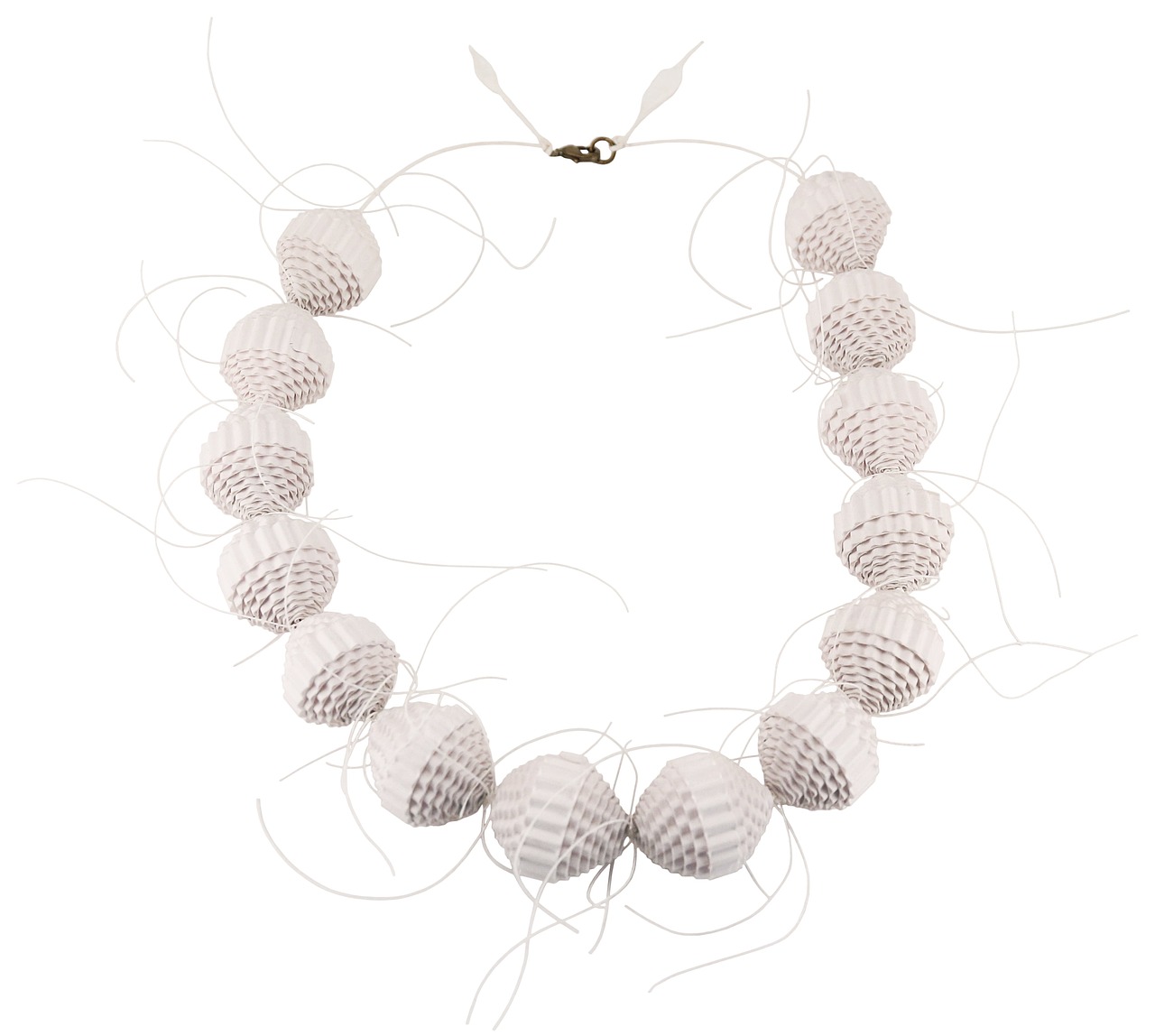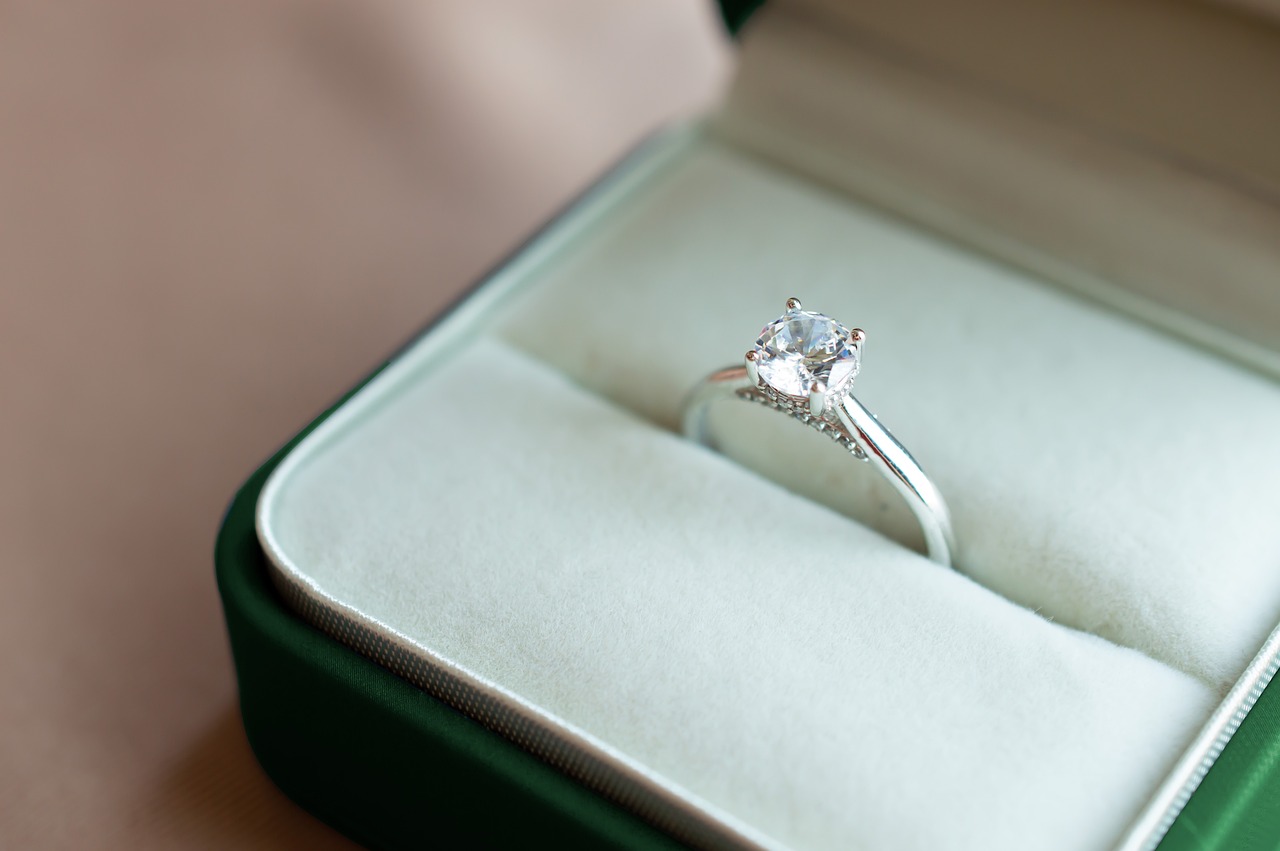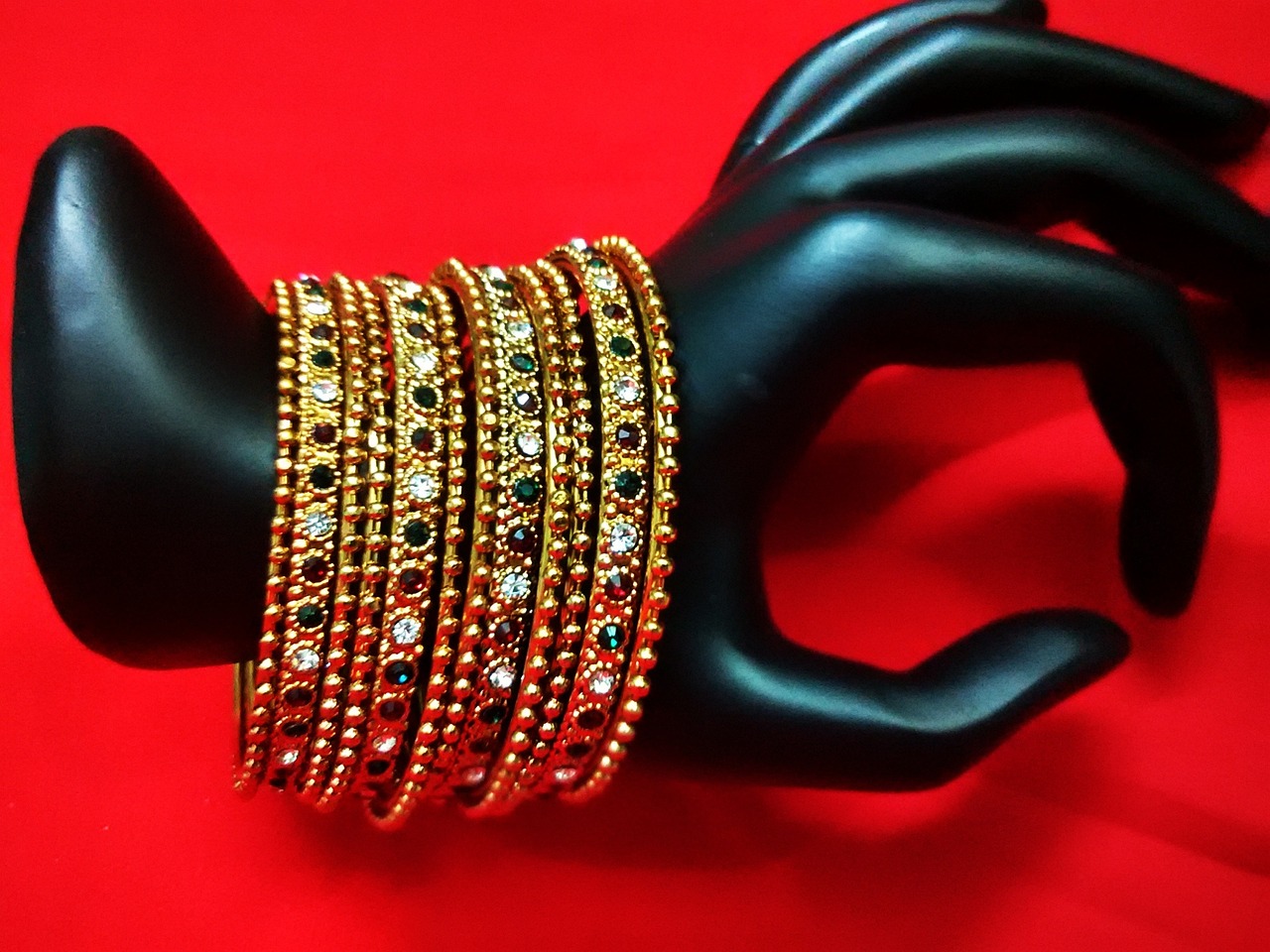This article explores essential tips for safely storing and insuring your valuable jewelry, ensuring its protection and longevity while maximizing your peace of mind. Jewelry is not just an accessory; it often carries significant emotional and financial value. Thus, understanding how to properly care for and protect your pieces is crucial.
Proper storage is vital for maintaining the integrity and appearance of your jewelry. Inadequate storage can lead to damage, such as scratches, tarnishing, and even loss. By implementing effective storage solutions, you can ensure your jewelry remains in pristine condition for years to come.
To protect your valuable pieces, consider the following best practices:
- Choose the Right Storage Location: Store your jewelry in a cool, dry place away from direct sunlight and humidity to prevent damage.
- Use Jewelry Boxes and Organizers: Invest in quality jewelry boxes with compartments to keep items separated and prevent tangling.
- Utilize Anti-Tarnish Materials: Incorporate anti-tarnish pouches or cloths in your storage solutions to maintain shine.
Regular cleaning is essential for preserving the beauty of your pieces. Here are some effective cleaning techniques:
- For Gold and Silver: Use a soft cloth and a gentle cleaner specifically designed for precious metals.
- For Gemstones: Check the specific care instructions, as some stones require special handling.
- For Pearls: Wipe with a soft cloth after wearing to remove oils and dirt.
Insuring your jewelry is a critical step in safeguarding your investment. Here are key factors to consider:
- Assessing the Value of Your Jewelry: It’s essential to accurately determine the value of your pieces. Consider getting a professional appraisal.
- Choosing the Right Insurance Policy: Research different insurance options to find a policy that meets your specific needs and covers loss, theft, and damage.
Avoiding common pitfalls can save you from potential losses:
- Neglecting Regular Appraisals: Failing to update appraisals can lead to inadequate coverage. Schedule appraisals every few years.
- Storing Jewelry in Unsafe Locations: Avoid keeping jewelry in easily accessible places such as drawers or under pillows, as these are prime targets for theft.
By following these guidelines, you can ensure that your jewelry is not only beautifully displayed but also well-protected. Proper storage and insurance will provide peace of mind, allowing you to enjoy your valuable pieces without worry.
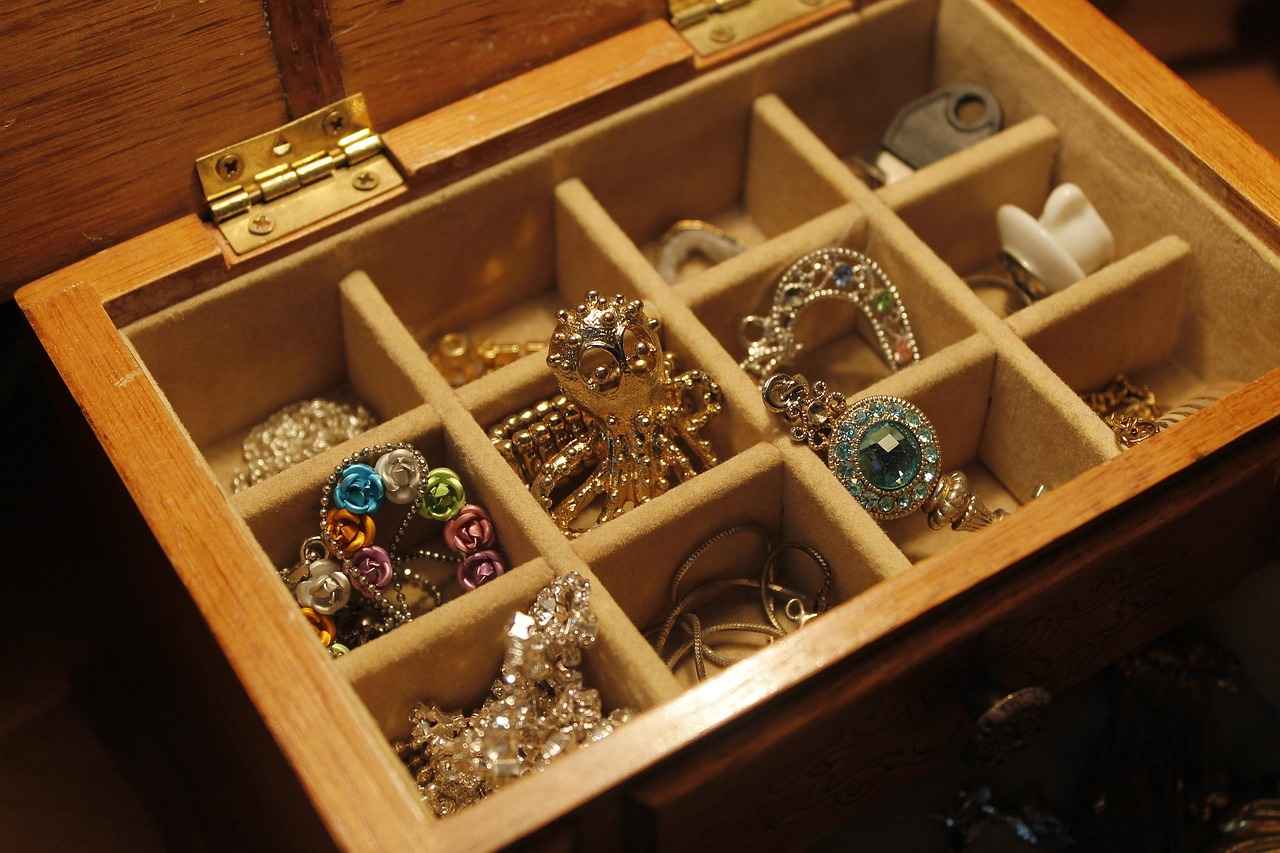
Why Is Proper Jewelry Storage Important?
When it comes to preserving your valuable jewelry, proper storage is of utmost importance. Understanding the significance of effective storage solutions can not only prevent damage but also minimize the risk of loss. By taking the time to implement the right practices, you can ensure that your expensive pieces remain in pristine condition for years to come.
Jewelry is often more than just an accessory; it can hold significant emotional value and represent substantial financial investment. Therefore, protecting your jewelry should be a top priority. Improper storage can lead to a myriad of issues, including scratches, tarnishing, and even breakage. These problems can arise from exposure to elements such as moisture, sunlight, and extreme temperatures, which can all adversely affect the integrity of your pieces.
Moreover, jewelry that is not stored correctly can become tangled or lost, causing further frustration and potential financial loss. Implementing effective storage practices can help you avoid these common pitfalls. For instance, using padded compartments in jewelry boxes can prevent pieces from scratching against one another, while anti-tarnish pouches can help maintain the luster of silver and gold items.
Additionally, the location where you store your jewelry plays a crucial role in its preservation. A cool, dry environment is ideal for keeping your pieces safe from humidity and temperature fluctuations that can cause damage over time. Avoid storing jewelry in places like bathrooms or attics, where conditions can vary significantly.
It is also essential to consider the materials your jewelry is made from. Different metals and gemstones may require specific care and storage solutions. For example, pearls and opals are more sensitive and should be stored separately to avoid scratches from harder stones. Understanding these nuances can significantly extend the life of your jewelry.
In summary, the importance of proper jewelry storage cannot be overstated. By recognizing the potential risks and implementing effective storage solutions, you can ensure that your valuable pieces remain safe and beautiful. Taking these steps not only protects your investment but also brings you peace of mind, allowing you to enjoy your jewelry for many years to come.

What Are the Best Practices for Storing Jewelry?
When it comes to preserving the beauty and integrity of your jewelry, understanding best practices for storage is essential. Proper storage not only safeguards your precious pieces from damage but also helps keep them organized and easily accessible. Below, we explore effective methods that can significantly reduce wear and tear on your jewelry, ensuring it remains in pristine condition.
Jewelry is often a significant investment, both financially and sentimentally. Proper storage methods can help prevent scratches, tarnishing, and loss. By implementing effective storage solutions, you can increase the longevity of your pieces and maintain their aesthetic appeal.
- Choose the Right Storage Location: Select a cool, dry place away from direct sunlight. Avoid areas with high humidity, such as bathrooms, as moisture can lead to tarnishing.
- Use Jewelry Boxes and Organizers: Invest in quality jewelry boxes with compartments to keep pieces separated. This prevents tangling and scratches. Look for organizers with soft linings to provide extra cushioning.
- Utilize Anti-Tarnish Materials: Incorporate anti-tarnish pouches or cloths in your storage solutions. These materials absorb moisture and prevent tarnishing, keeping your silver and gold jewelry looking new.
- Store Jewelry Individually: To prevent scratching and tangling, store each piece individually. Use soft pouches or wrap them in tissue paper before placing them in a box.
- Keep Necklaces Fastened: Fastening the clasps of necklaces can prevent tangling. Consider using a necklace holder or hanging organizer for easy access and visibility.
Regular cleaning is vital for maintaining the luster of your jewelry. Use a soft cloth to wipe down pieces after wearing them, and store them in a way that minimizes exposure to air and moisture. For deeper cleaning, consider professional services, especially for intricate designs or delicate materials.
In addition to proper storage, insuring your jewelry is crucial for financial protection. When selecting an insurance policy, consider the value of your pieces and ensure you have accurate appraisals. Regularly update your insurance coverage to reflect any changes in value.
- Neglecting Regular Appraisals: Failing to keep your jewelry appraised can lead to inadequate insurance coverage. Schedule appraisals every few years to ensure your pieces are properly valued.
- Storing Jewelry in Unsafe Locations: Avoid leaving jewelry in easily accessible places like drawers or countertops. Instead, use a secure, locked box or safe to protect against theft.
By following these best practices, you can effectively store your jewelry, ensuring that it remains safe, organized, and in excellent condition for years to come. Implementing these strategies will not only enhance the longevity of your pieces but also provide peace of mind knowing that your valuable items are well-protected.
Choosing the Right Storage Location
When it comes to preserving your valuable jewelry, is absolutely essential. The environment in which you store your pieces can significantly impact their longevity and overall condition. In this section, we will explore the ideal conditions for jewelry storage and the factors you should consider to minimize risks such as humidity and temperature fluctuations.
Jewelry is often made from delicate materials that can be easily affected by their surroundings. Here are some key environmental factors to keep in mind:
- Humidity: Excess moisture can lead to tarnishing and corrosion, particularly for silver and certain gemstones. Aim to store your jewelry in a location with low humidity, ideally between 30% and 50%.
- Temperature: Extreme temperature changes can cause materials to expand and contract, which may lead to damage. A stable temperature range of 60°F to 75°F is recommended.
- Light Exposure: Prolonged exposure to sunlight or bright artificial light can fade the colors of gemstones and damage certain metals. Store your jewelry in a dark or dimly lit area to prevent this.
Choosing a secure and suitable location for your jewelry is crucial. Here are some options:
- Jewelry Boxes: These are specifically designed to protect your jewelry from dust and damage. Look for boxes with compartments to keep pieces separated and untangled.
- Safe Deposit Boxes: For high-value items, consider using a safe deposit box at a bank. This provides an added layer of security against theft and damage.
- Climate-Controlled Spaces: If you have a collection of valuable pieces, consider a climate-controlled storage unit. This can help maintain optimal humidity and temperature levels.
Failing to store your jewelry properly can lead to a variety of issues:
- Tarnishing: Silver and other metals can tarnish quickly in humid environments, leading to unsightly discoloration.
- Scratches and Damage: Storing jewelry in a crowded space can result in scratches and other physical damage.
- Loss or Theft: Keeping valuable items in easily accessible locations increases the risk of theft.
By taking the time to choose the right storage location and considering environmental factors, you can significantly extend the life of your jewelry collection. Remember, your valuable pieces deserve the best care to maintain their beauty and value.
Using Jewelry Boxes and Organizers
When it comes to safeguarding your precious jewelry, jewelry boxes and organizers are indispensable tools. Not only do they provide a secure environment for your valuables, but they also help you maintain organization, making it easier to find and enjoy your pieces. In this section, we will explore the various types of jewelry boxes and organizers available, their unique benefits, and how to choose the best fit for your collection.
- Traditional Jewelry Boxes: These are classic storage solutions, often made of wood or leather, featuring compartments and velvet lining to protect your jewelry from scratches.
- Travel Jewelry Cases: Designed for on-the-go convenience, these compact cases often include padded sections and zippers to keep your jewelry secure during travel.
- Wall-Mounted Organizers: Ideal for those with limited space, these organizers hang on the wall and can hold various types of jewelry, including necklaces, earrings, and bracelets.
- Drawer Inserts: If you prefer to store your jewelry in a drawer, inserts can help keep items separated and organized, reducing the risk of tangling and damage.
Utilizing jewelry organizers offers numerous advantages:
- Protection: Organizers prevent your jewelry from becoming tangled or scratched, ensuring that each piece remains in pristine condition.
- Accessibility: With a well-organized system, you can quickly find and access your favorite pieces without rummaging through a pile.
- Space Efficiency: Many organizers are designed to maximize space, allowing you to store more items in a compact area.
- Style: Jewelry boxes come in various designs, allowing you to choose one that complements your decor while serving a practical purpose.
When selecting a jewelry box or organizer, consider the following factors:
- Size: Assess your jewelry collection’s size and choose an organizer that can accommodate your pieces without overcrowding.
- Material: Opt for high-quality materials that provide durability and protection against environmental factors.
- Functionality: Look for features such as removable compartments, lockable designs, or travel-friendly options that cater to your specific needs.
- Style: Choose a design that reflects your personal taste and fits harmoniously with your living space.
Incorporating the right jewelry boxes and organizers into your storage routine can significantly enhance the longevity and condition of your valuable pieces. By investing in quality storage solutions, you not only protect your jewelry but also add a touch of elegance to your home. Remember, the right organizer is not just a storage unit; it is a reflection of your style and a safeguard for your cherished belongings.
Utilizing Anti-Tarnish Materials
When it comes to preserving the beauty of your jewelry, is a crucial strategy that can significantly extend the lifespan of your cherished pieces. Jewelry, especially those made from silver, gold, and other metals, is prone to tarnishing due to exposure to air, moisture, and various chemicals. By incorporating anti-tarnish solutions into your storage practices, you can effectively maintain the shine and luster of your valuable items.
Anti-tarnish materials are specially designed substances that help prevent the oxidation process that leads to tarnishing. These materials can be found in various forms, including:
- Anti-tarnish cloths: Treated fabrics that can be used to wipe down jewelry, leaving a protective layer.
- Anti-tarnish pouches: Small bags made from materials that absorb moisture and inhibit tarnish.
- Anti-tarnish strips: Thin strips that release anti-tarnish agents into the air within a jewelry box or case.
Effectively utilizing anti-tarnish materials requires a few simple steps:
- Choose the Right Storage Containers: Opt for jewelry boxes or organizers that are lined with anti-tarnish fabric or have built-in anti-tarnish features.
- Use Anti-Tarnish Cloths: Before placing your jewelry in storage, gently wipe each piece with an anti-tarnish cloth to remove any oils or residues that may accelerate tarnishing.
- Store with Anti-Tarnish Strips: Place anti-tarnish strips in your jewelry box or drawer to create a protective environment that reduces tarnishing.
In addition to using anti-tarnish materials, consider the following tips to further protect your jewelry:
- Avoid Humidity: Store your jewelry in a cool, dry place. High humidity can speed up the tarnishing process.
- Limit Exposure to Chemicals: Remove jewelry before using lotions, perfumes, or cleaning products, as these can contribute to tarnishing.
- Regular Cleaning: Clean your jewelry regularly to remove any tarnish that may have formed, using appropriate cleaning solutions for each type of metal.
By following these guidelines and utilizing anti-tarnish materials, you can ensure that your jewelry remains as radiant as the day you purchased it. Investing in proper storage solutions not only enhances the longevity of your pieces but also provides peace of mind knowing that your valuables are well-protected.
How to Clean and Maintain Your Jewelry
Keeping your jewelry in pristine condition is essential for preserving its beauty and value. Regular cleaning and maintenance are not just about aesthetics; they play a crucial role in ensuring the longevity of your precious items. In this section, we will explore effective cleaning techniques and maintenance tips tailored for various materials.
Over time, jewelry can accumulate dirt, oils, and tarnish, which can dull its shine and even damage the materials. Regular cleaning helps to maintain the brilliance of gemstones and metals, ensuring that your pieces remain as stunning as the day you bought them. Additionally, proper maintenance can help identify any potential issues, such as loose stones or damaged clasps, before they become significant problems.
- Gold and Silver: Use a soft cloth or a jewelry cleaning solution specifically designed for precious metals. Avoid abrasive materials that can scratch the surface.
- Gemstones: For most gemstones, a gentle soap solution and a soft brush will suffice. However, be cautious with porous stones like opals or pearls; they require specialized care.
- Costume Jewelry: Clean with a damp cloth and avoid submerging in water, as this can damage the glue holding the pieces together.
Regular inspection is key to maintaining your jewelry. Look for signs of wear, such as loose stones or damaged settings. If you notice any issues, take your jewelry to a professional for repair. Additionally, consider the following maintenance practices:
- Store Properly: Always store your jewelry in a cool, dry place, away from direct sunlight. Use soft pouches or lined boxes to prevent scratches.
- Avoid Exposure: Remove your jewelry before engaging in activities that may cause damage, such as swimming, exercising, or applying lotions and perfumes.
- Schedule Professional Cleanings: For intricate pieces or those with significant value, consider having them professionally cleaned and maintained at least once a year.
Antique and vintage pieces often require extra care due to their age and delicate construction. When cleaning these items, it is advisable to consult with a professional who specializes in antique jewelry to avoid any damage. They may recommend specific cleaning solutions or techniques suited for the materials used in these unique pieces.
By implementing these cleaning and maintenance strategies, you can ensure that your jewelry remains beautiful and intact for years to come. Remember, a little effort goes a long way in preserving the charm and value of your treasured pieces.

What to Consider When Insuring Your Jewelry?
When it comes to protecting your valuable jewelry, insuring your pieces is an essential step that should not be overlooked. Jewelry can carry significant sentimental and financial value, making it crucial to ensure that it is adequately protected against potential risks such as theft, loss, or damage. In this section, we will explore the key factors to consider when selecting an insurance policy for your treasured items.
Jewelry is often one of the most valuable items individuals own, and its loss can be devastating. Insurance provides peace of mind by ensuring that you can recover your financial investment in case of unforeseen events. Without insurance, replacing a lost or damaged piece can be prohibitively expensive.
Before you can insure your jewelry, it is vital to accurately assess its value. This process involves:
- Professional Appraisal: Consider hiring a certified appraiser who specializes in jewelry to get an accurate valuation. An appraisal will take into account the quality, materials, and market trends.
- Documentation: Keep all receipts, certificates of authenticity, and appraisals organized. This documentation will be crucial when filing a claim.
- Regular Updates: Jewelry values can fluctuate over time, so it is essential to have your pieces reappraised every few years to ensure your coverage remains adequate.
Not all insurance policies are the same, and selecting the right one involves understanding your options:
- Replacement Cost vs. Actual Cash Value: Replacement cost policies cover the cost of replacing your jewelry with a new piece, while actual cash value policies take depreciation into account. Choose based on your financial comfort and the value of your pieces.
- Scheduled vs. Unscheduled Policies: Scheduled policies list specific items for coverage, providing detailed protection. Unscheduled policies cover jewelry as a whole but may have limits on the amount reimbursed for individual pieces.
- Exclusions and Limitations: Be sure to read the fine print. Some policies may exclude certain types of damage or loss, so it’s essential to understand what is and isn’t covered.
Filing a claim can be a stressful experience, but knowing the process can help:
- Documentation: Ensure you have all necessary documents ready, including appraisals and photographs of your jewelry.
- Timeliness: Report the loss or damage to your insurer as soon as possible to avoid complications.
- Follow-Up: Stay in communication with your insurance provider throughout the claims process to ensure everything is handled smoothly.
To make the most of your jewelry insurance, avoid these common pitfalls:
- Underinsuring Your Jewelry: Failing to insure your pieces for their full value can lead to significant losses in the event of a claim.
- Neglecting to Update Your Policy: As your collection grows or changes, ensure your insurance policy reflects these updates.
- Ignoring Policy Terms: Always be aware of your policy’s terms, including deductibles and the claims process, to avoid surprises later.
In summary, insuring your jewelry is a critical step in safeguarding your investment. By understanding how to assess the value of your pieces, choosing the right policy, and avoiding common mistakes, you can ensure that your valuable items are protected for years to come.
Assessing the Value of Your Jewelry
Assessing the value of your jewelry is a crucial step in ensuring that you have the right insurance coverage. Without an accurate appraisal, you may find yourself underinsured or overpaying for coverage. Here’s a comprehensive guide to understanding how to assess the value of your jewelry effectively.
Jewelry appraisal is not just about determining a price; it reflects the intrinsic value of your pieces based on factors like craftsmanship, materials, and market demand. Having an accurate appraisal ensures that your jewelry is adequately covered in case of theft, loss, or damage.
There are several methods to appraise your jewelry effectively:
- Professional Appraisal: Hiring a certified appraiser is the most reliable method. They will evaluate your jewelry based on quality, condition, and market trends.
- Comparative Market Analysis: Research similar pieces in the market to gauge their selling prices. This method can provide a ballpark figure for your jewelry’s value.
- Online Appraisal Services: Many websites offer appraisal services where you can submit photos and descriptions of your jewelry for an estimated value.
Regular appraisals are essential to keep your insurance policy updated. It is recommended to have your jewelry appraised every three to five years, especially if you have made significant changes to your collection or if the market for precious metals and stones fluctuates.
Several factors can influence the value of your jewelry:
- Material Quality: The type of metal (gold, silver, platinum) and the quality of gemstones (cut, clarity, carat weight) play a significant role.
- Brand and Designer: Jewelry from renowned designers or brands often commands a higher price.
- Condition: Well-maintained pieces will generally be valued higher than those showing signs of wear and tear.
- Market Trends: The current demand for certain styles or materials can also impact value.
When selecting an appraiser, consider the following:
- Credentials: Look for appraisers who are certified by recognized organizations such as the American Society of Appraisers (ASA) or the National Association of Jewelry Appraisers (NAJA).
- Experience: Choose an appraiser with a solid background and expertise in jewelry valuation.
- References: Ask for references or read reviews from previous clients to gauge their reliability and professionalism.
A professional appraisal should come with detailed documentation, including:
- Description: A thorough description of the jewelry, including materials and dimensions.
- Photographs: Clear images that capture the item from multiple angles.
- Value Estimate: A written estimate of the jewelry’s value, along with the methodology used for the appraisal.
By understanding the importance of jewelry appraisal and following these guidelines, you can ensure that your valuable pieces are accurately valued and adequately insured. This proactive approach not only protects your investment but also provides peace of mind, knowing that your cherished items are safeguarded.
Choosing the Right Insurance Policy
When it comes to protecting your valuable jewelry, is crucial. With a variety of options available, understanding the differences can help you make an informed decision that best meets your needs. This section will explore the types of insurance policies, key factors to consider, and tips for selecting the most suitable coverage for your precious items.
There are primarily two types of insurance policies for jewelry: homeowners insurance and specialized jewelry insurance.
- Homeowners Insurance: This type of policy typically covers personal property, including jewelry, but often has limitations. It’s essential to check the fine print, as there may be a cap on how much you can claim for jewelry losses.
- Specialized Jewelry Insurance: This policy is tailored specifically for jewelry and often provides broader coverage. It can cover loss, theft, and damage, and may even include coverage for mysterious disappearance.
When selecting an insurance policy, consider the following factors:
- Value of Your Jewelry: Accurately assess the value of each piece. You may need to get an appraisal from a certified jeweler to ensure the insured amount reflects the current market value.
- Coverage Options: Look for policies that offer comprehensive coverage, including theft, loss, and accidental damage. Ensure the policy includes replacement cost coverage rather than actual cash value.
- Deductibles: Understand the deductible amounts. A lower deductible might seem appealing, but it could lead to higher premiums. Balance your needs and budget.
- Claims Process: Research the insurer’s claims process. A straightforward and efficient claims process can save you time and stress in the event of a loss.
Before finalizing your policy, consider asking these important questions:
- What is covered? Ensure you understand what is included and excluded in the policy.
- Are there any limits on coverage? Inquire about any caps on claims for specific types of jewelry.
- How often should I update my policy? Jewelry values can change, and you may need to adjust your coverage accordingly.
Regularly appraising your jewelry is essential to ensure that your insurance policy remains adequate. As market values fluctuate, an outdated appraisal could leave you underinsured. Aim for an appraisal every few years or after significant changes in the jewelry market.
To maximize your insurance coverage, avoid these common mistakes:
- Assuming Homeowners Insurance is Enough: Many people mistakenly believe their homeowners policy provides sufficient coverage, which often isn’t the case.
- Neglecting to Document Your Jewelry: Keep detailed records, including receipts and appraisals, to facilitate the claims process.
- Ignoring Policy Terms: Always read the policy terms thoroughly to avoid surprises when filing a claim.
By understanding the various insurance options and considering your specific needs, you can select a policy that provides the best protection for your jewelry. Taking the time to choose wisely will ensure that your valuable pieces are safeguarded against unforeseen events.

What Are Common Mistakes to Avoid?
Avoiding common pitfalls in jewelry storage and insurance is crucial for protecting your valuable items. By understanding and steering clear of these mistakes, you can save yourself from potential losses and ensure your jewelry remains safe and secure.
When it comes to jewelry storage and insurance, several common mistakes can jeopardize the safety and value of your pieces. Here are some key pitfalls to avoid:
- Neglecting Regular Appraisals: One of the most significant mistakes is failing to have your jewelry appraised on a regular basis. Jewelry can fluctuate in value over time due to market changes. Without an up-to-date appraisal, your insurance coverage might be inadequate, leaving you vulnerable in case of theft or damage.
- Storing Jewelry in Unsafe Locations: Many people make the error of storing their jewelry in easily accessible places, such as drawers or under pillows. These locations can increase the risk of theft or accidental damage. Instead, consider using a secure safe or a locked jewelry box to protect your valuables.
- Ignoring Environmental Factors: Jewelry can be sensitive to environmental conditions. Storing pieces in damp areas or direct sunlight can lead to tarnishing and degradation. Always choose storage locations that are cool, dry, and away from direct light.
- Mixing Different Types of Jewelry: Storing different types of jewelry together can cause scratches and tangling. For instance, placing delicate chains with heavier pieces can lead to damage. Use separate compartments or pouches for different items to maintain their condition.
- Overlooking Insurance Policy Details: Many people assume that their homeowners’ insurance covers all jewelry, which is often not the case. It’s essential to read the fine print of your insurance policy to understand what is covered and to consider specialized jewelry insurance for higher value items.
- Failure to Document Your Collection: Not keeping a detailed inventory of your jewelry can be a costly mistake. In case of loss or theft, having a documented list, including photographs and appraisals, can expedite the claims process and ensure you receive proper compensation.
- Neglecting Maintenance: Regular maintenance is vital for preserving the beauty and integrity of your jewelry. Many individuals overlook the need for cleaning and inspection. Establish a routine for cleaning your pieces and check for any loose stones or damage.
By being aware of these common mistakes and taking proactive measures, you can significantly enhance the safety and longevity of your jewelry collection. Whether it’s through proper storage techniques or ensuring adequate insurance coverage, being informed is your best defense against potential losses.
Neglecting Regular Appraisals
When it comes to protecting your valuable jewelry, regular appraisals are not just a suggestion; they are a necessity. Many jewelry owners underestimate the importance of having their pieces appraised at regular intervals, leading to potential financial pitfalls. This section delves into why neglecting regular appraisals can result in inadequate insurance coverage and the broader implications for your jewelry collection.
Jewelry values can fluctuate significantly over time due to various factors, including market demand, changes in materials, and economic conditions. Without up-to-date appraisals, your insurance policy may not reflect the true value of your jewelry, leaving you vulnerable in case of loss, theft, or damage.
- Underinsurance: If your jewelry is appraised at a lower value than its current worth, you may only receive a fraction of what it costs to replace it.
- Overinsurance: Conversely, if you rely on an outdated appraisal, you might be paying higher premiums than necessary.
- Claims Denial: In the unfortunate event of a claim, insurance companies may deny your claim if the appraisal is not current, citing inadequate valuation.
As a general guideline, it is advisable to have your jewelry appraised every three to five years. However, significant changes in the market or after acquiring new pieces may warrant more frequent evaluations. Additionally, if you make any modifications to your jewelry, such as resizing or enhancing, a new appraisal should be conducted.
Not all appraisers are created equal. Look for professionals who are certified and have experience in the specific type of jewelry you own. A reputable appraiser will provide a detailed report that includes:
- A comprehensive description of the item.
- A fair market value based on current trends.
- Information on the appraisal process and methodology.
During an appraisal, you can expect the appraiser to examine your jewelry closely. They will assess factors such as:
- The quality of the materials used.
- The craftsmanship and design.
- The current market demand for similar pieces.
This thorough examination ensures that the appraisal reflects the true value of your jewelry, providing you with peace of mind and adequate insurance coverage.
It is crucial to maintain a record of all appraisals and any related documents. This documentation can be invaluable in the event of a claim, as it provides proof of the value of your jewelry. Additionally, it can help you track the appreciation or depreciation of your items over time.
In summary, neglecting regular appraisals can lead to significant financial consequences and inadequate protection for your valuable jewelry. By staying proactive and ensuring your appraisals are current, you can safeguard your investment and enjoy your pieces without worry.
Storing Jewelry in Unsafe Locations
When it comes to safeguarding your valuable jewelry, the storage location is paramount. Storing jewelry in unsafe locations can significantly increase the risk of theft or damage. Understanding which practices to avoid and what alternatives exist can help ensure your treasured pieces remain protected.
Many people unknowingly engage in unsafe storage practices that can jeopardize their jewelry. Here are some common pitfalls:
- Leaving Jewelry Out in the Open: Displaying jewelry on countertops or dressers makes it an easy target for theft and can lead to accidental damage.
- Storing in Humid Areas: Locations such as bathrooms or damp basements can promote tarnishing and corrosion, especially for precious metals.
- Using Non-Secure Containers: Storing jewelry in unprotected boxes or bags without locks can lead to theft, especially if the containers are easily accessible.
- Mixing Different Types of Jewelry: Storing necklaces, rings, and bracelets together can cause scratching and tangling, leading to damage over time.
To combat these unsafe practices, consider the following alternatives that provide enhanced protection for your jewelry:
- Invest in a Quality Jewelry Safe: A secure safe offers the best protection against theft. Look for one that is fireproof and waterproof for added security.
- Use Anti-Tarnish Pouches: These pouches can help prevent tarnishing and keep your jewelry in pristine condition. Store individual pieces in these pouches to avoid damage.
- Designate a Specific Storage Area: Create a dedicated space for your jewelry, preferably in a locked drawer or cabinet, to keep it secure and organized.
- Utilize Dividers and Organizers: Jewelry boxes with compartments can help separate different types of jewelry, reducing the risk of scratches and tangling.
In addition to choosing the right storage solutions, the environment where you store your jewelry is crucial. Aim for a cool, dry place with stable temperature and humidity levels. Avoid areas with direct sunlight, as UV rays can fade gemstones and damage materials over time.
It’s essential to periodically assess your jewelry storage practices. As your collection grows or changes, so should your storage solutions. Regularly check for any signs of damage or wear, and make adjustments as necessary to ensure your jewelry remains safe.
By identifying unsafe storage practices and implementing effective alternatives, you can significantly reduce the risk of theft and damage to your valuable jewelry. Protecting your investment not only preserves its value but also enhances your peace of mind.
Frequently Asked Questions
- How should I store my expensive jewelry?
Storing your jewelry in a cool, dry place is essential. Use a jewelry box lined with anti-tarnish material to keep your pieces safe from scratches and tarnishing. Avoid storing them in damp areas or direct sunlight.
- What is the best way to clean my jewelry?
Cleaning methods vary by material. For most pieces, a gentle soap solution and a soft cloth work wonders. Always check specific care instructions for delicate items like pearls or opals to avoid damage.
- Why is insurance important for my jewelry?
Insurance protects your investment against theft, loss, or damage. It ensures that you can replace or repair your valuable items without incurring significant financial loss.
- How do I determine the value of my jewelry for insurance?
Getting your jewelry appraised by a certified gemologist is the best way to determine its value. Regular appraisals ensure that your insurance coverage reflects the current market value.
- What common mistakes should I avoid when storing jewelry?
Avoid storing jewelry in unsafe locations like public spaces or unmonitored areas. Also, don’t neglect regular appraisals as they can lead to inadequate insurance coverage.
